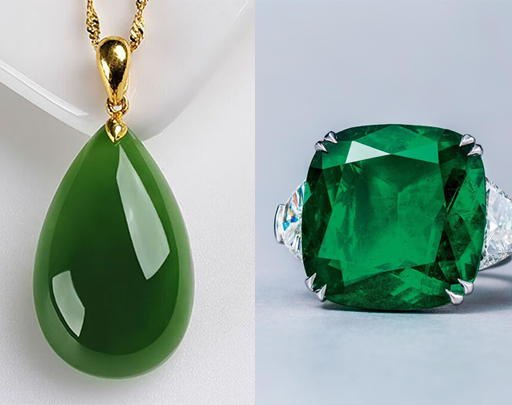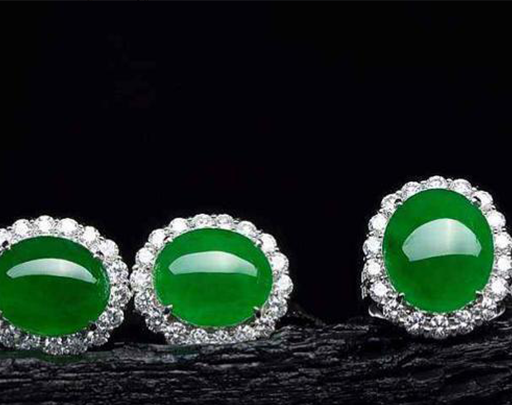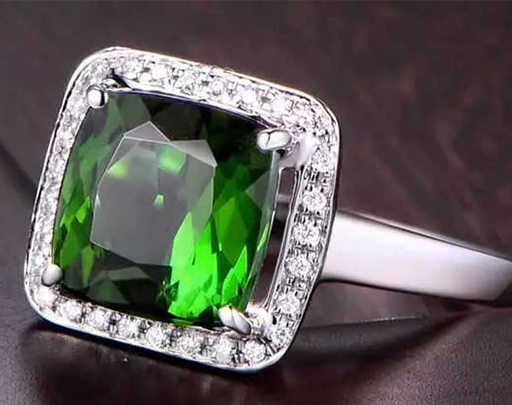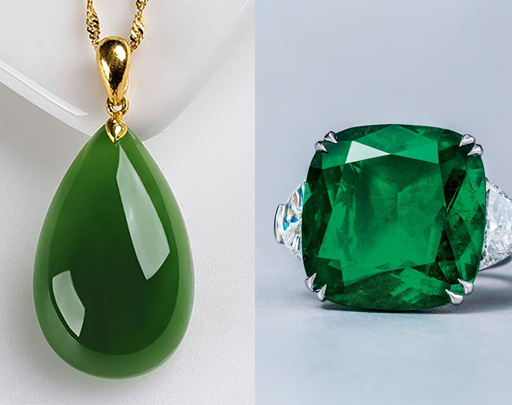
The Distinct Beauty of 2 Gems: Jade VS Emerald
In the realm of precious stones, jade and emerald stand out as two of the most esteemed and coveted gemstones. Both possessing a rich history and cultural significance, these gems are often associated with luxury and elegance. However, despite their similar appeal, jade and emerald are distinct in their composition, appearance, and cultural significance. This article aims to delve into the fascinating world of these two gemstones, highlighting their unique characteristics and helping you appreciate their individual beauty.
The Allure of Jade
Jade has been cherished for thousands of years, particularly in East Asian cultures, where it is often regarded as a symbol of purity and moral integrity. There are two main types of jade: nephrite and jadeite. Nephrite, the more common form, is composed of calcium magnesium silicate, while jadeite, which is rarer and more valuable, is a sodium aluminum silicate.
Appearance and Characteristics
Jade’s allure lies in its smooth, lustrous texture and its wide range of colors, which include green, white, yellow, lavender, and even black. The most prized jade is imperial jade, a vibrant green variety of jadeite. Unlike many other gemstones, jade is often valued for its translucency and the evenness of its color distribution.
Jade is also renowned for its toughness, which makes it ideal for carving intricate designs and shapes. This toughness is a result of its interlocking fibrous structure, which makes jade more resistant to breaking than other gemstones.

Cultural Significance
In Chinese culture, jade is often referred to as the “Stone of Heaven” and is imbued with deep spiritual significance. It is believed to possess protective qualities, bringing luck and warding off evil. Jade artifacts, from jewelry to ceremonial objects, have been found in ancient tombs, highlighting its importance in historical and cultural contexts.
The Elegance of Emerald
Emerald, on the other hand, is a variety of the mineral beryl, colored green by trace amounts of chromium and sometimes vanadium. Known for its rich, verdant hues, emeralds have been prized since ancient times, particularly in the civilizations of Egypt, Greece, and Rome.

Appearance and Characteristics
Emeralds are characterized by their vibrant green color, which can range from a light, grassy hue to a deep, forest green. The most sought-after emeralds exhibit a strong, evenly distributed color with high transparency. Unlike jade, emeralds are known for their inclusions, which are often referred to as “Jardin” (French for “garden”) because they resemble garden-like features. These inclusions are not necessarily considered flaws; in fact, they can add to the character and value of the stone.
Emeralds are softer and more brittle than jade, which means they require careful handling and setting to prevent damage. Despite this, their captivating color and historical significance make them highly desirable.
Cultural Significance
Emeralds have been associated with various mythologies and beliefs throughout history. In ancient Egypt, emeralds were believed to symbolize fertility and rebirth. The Romans dedicated emeralds to Venus, the goddess of love and beauty, and considered them to possess restorative properties for the eyes. In modern times, emeralds are often associated with wealth, power, and eloquence.
Comparing Jade and Emerald
1.Color and Composition
The most obvious difference between jade and emerald is their color and composition. While jade comes in a variety of colors, emerald is exclusively green, with its hue resulting from the presence of chromium or vanadium. Jade’s composition varies between nephrite and jadeite, whereas emerald is a form of beryl.

2.Durability and Use
In terms of durability, jade’s toughness makes it suitable for carving and everyday wear, whereas emeralds, being more brittle, are often reserved for special occasions and require more protective settings. This difference in durability influences how each gemstone is used in jewelry and art.
3.Cultural Value
Both stones hold significant cultural value but in different regions and contexts. Jade is deeply embedded in East Asian culture and spirituality, often symbolizing moral virtues and protection. Emerald, with its rich history in Western civilizations, is associated with themes of love, rebirth, and power.
Conclusion
In conclusion, jade and emerald, though both captivating and luxurious, offer distinct experiences to gemstone enthusiasts. Jade’s versatility in color and exceptional toughness make it a cherished stone in East Asian culture, symbolizing purity and protection. Emerald’s vivid green hue and historical significance in Western cultures imbue it with a sense of elegance and power.
Understanding the differences between these two gemstones allows one to appreciate their unique beauty and cultural importance. Whether you are drawn to the serene translucence of jade or the vibrant brilliance of emerald, both stones offer a timeless allure that continues to captivate and inspire.
